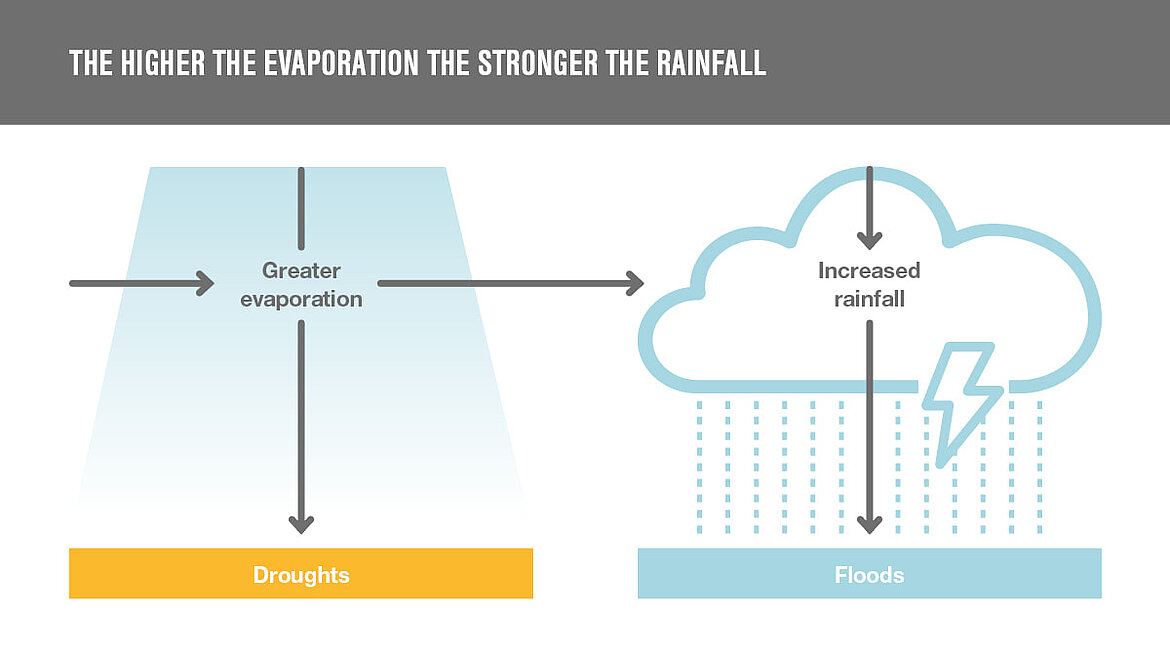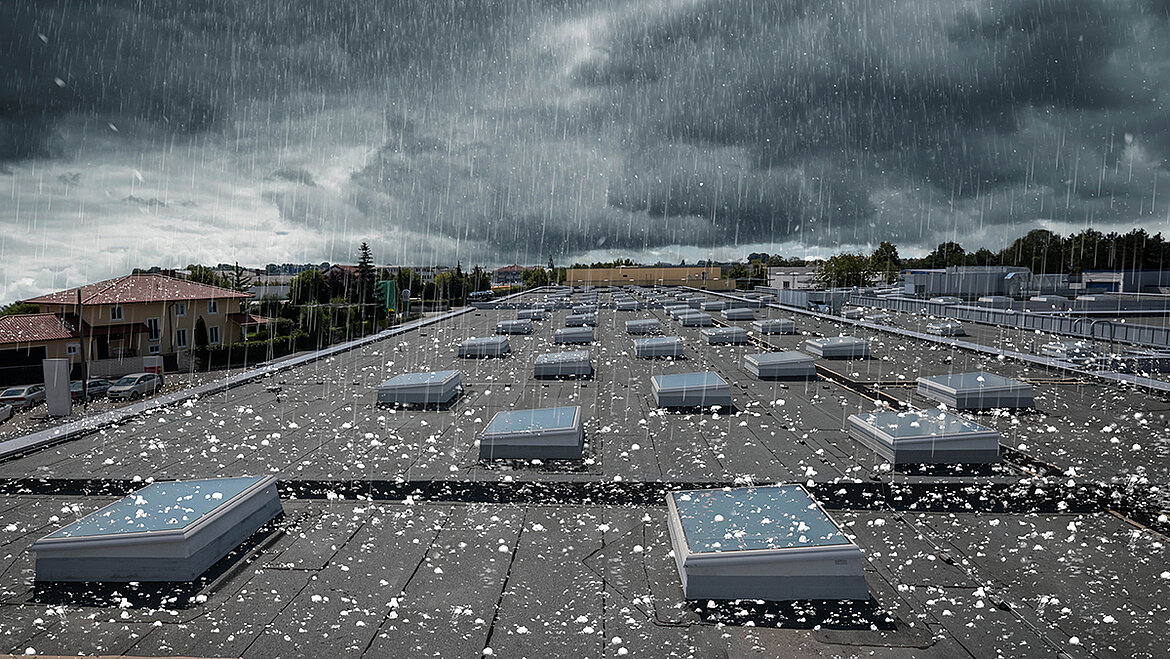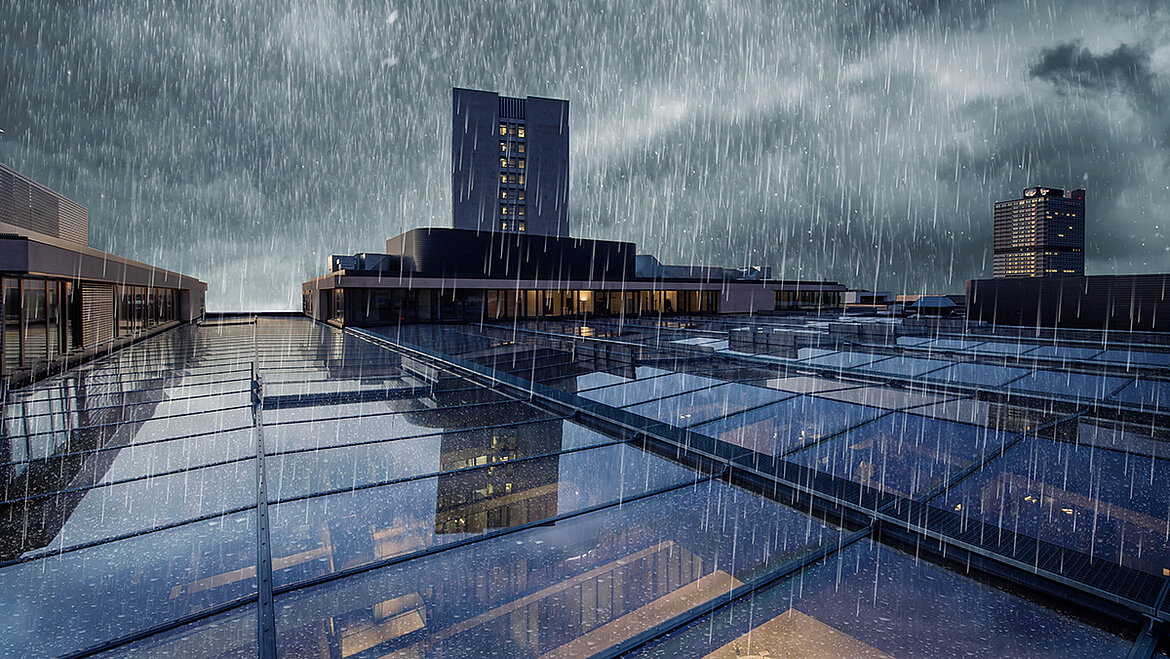What exactly is an extreme weather event?
We designate an extreme weather event as an extraordinary occurrence that deviates from the known average values. Such events occur very irregularly and are difficult to predict. Statistically, extreme weather events are rather rare in their recurrence, size or duration.
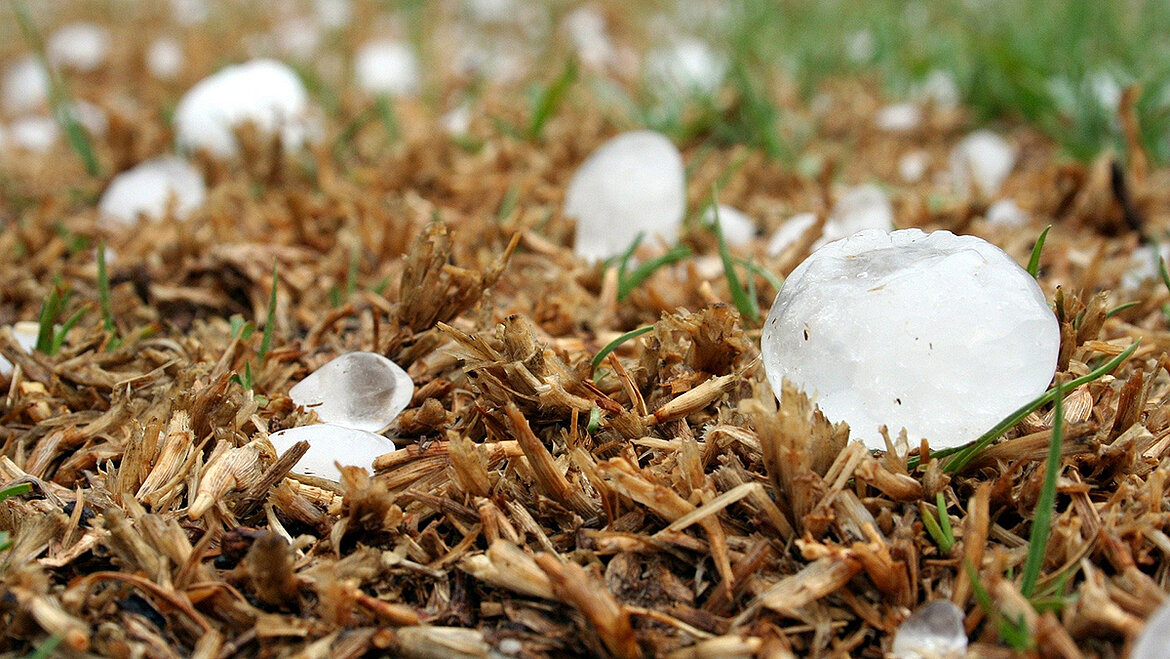
Extreme weather events occur in different forms:
- Very long periods of heat and drought
- Very heavy precipitation and heavy rain
- Storms, tornadoes, tropical cyclones
- Storm surges
- Extreme snowfall and hail
The weather is changing
Records for most weather extremes have only been kept since the mid-20th century - and for some regions of the world only since the 1970s or even later. The records for temperature or precipitation extremes are the most detailed. But is it really noticeable that the weather is changing?
Take the summer of 2020 for instance. It was characterised by long periods of heat. Farmers and foresters in particular have to cope with the consequences of wearisome droughts. The soils are hard and dry, the forests are suffering from dryness. Such heat waves and in particular their duration have increased in recent years. If they occur over several years successively, their consequences are drastically worsened. There are many records on this, specifically on changes in temperature and precipitation.
Another extreme weather event is storms and hurricanes - and their increase is also changing our weather. Let me briefly go back to their definition in order to better assess their impact: Storms have a much higher intensity than air movements on normal days. On the Beaufort scale, storms range from force nine to eleven, corresponding to wind speeds of 74 to 117 km/h. From a force of twelve or more, we consider it a hurricane. Examples of storms and hurricanes in recent years are low-pressure system Xavier 2017 and intense low-pressure system Friederike 2018, which hit large parts of Germany.
Clear trends can be identified weather extremes
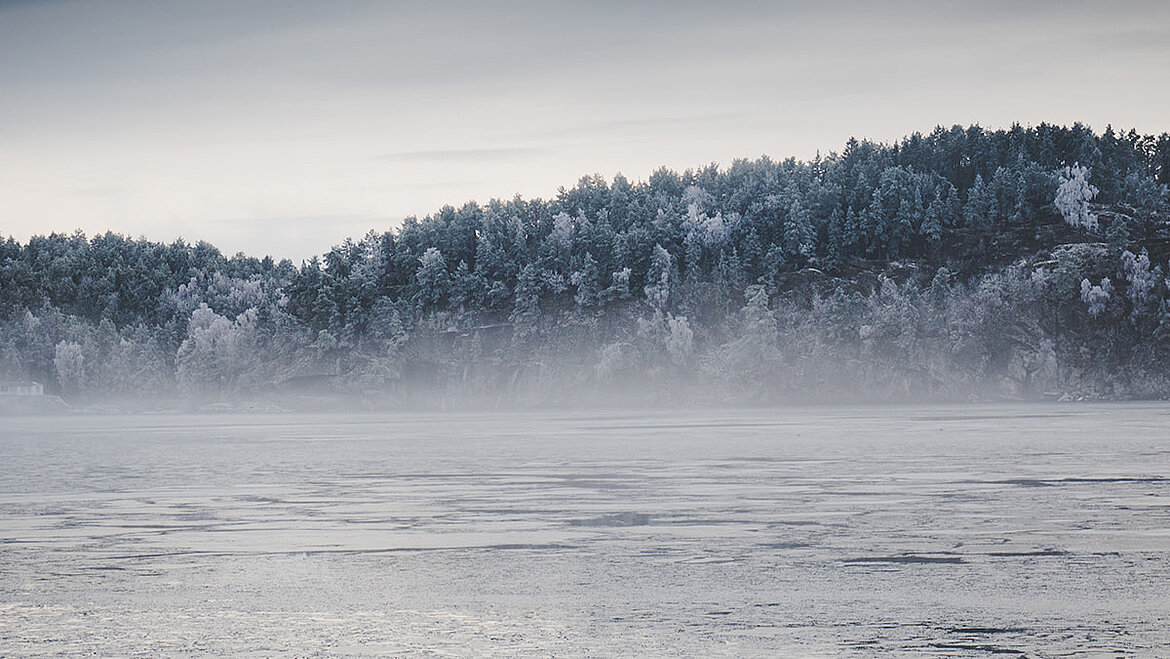
For some weather extremes, clear trends can be detected, which depends largely on the extent of their documentation. What can be observed?
- A decrease in cold nights and frosty days in winter has been identified.
- A similar development can be observed during cold or heat waves. Long periods of cold weather are decreasing, while long heat waves are increasing.
- The trend of heavy precipitation can be seen with increasing frequency, especially in the mid-latitudes.
- Since the 1970s there has also been an increase in the occurrence of widespread droughts and storms of strengths four and five.
- Extremely heavy snowfalls are becoming more frequent, while global snowfall is decreasing due to global warming.
In summary, a clear upward trend in extreme weather events can be observed. Many trends can be clearly linked to global warming.
Why and how do weather events change?
There are several reasons why extreme weather events in particular can change or multiply: the influence of humans on nature, such as increased greenhouse gas emissions, or natural effects, are some of the points that can be related.
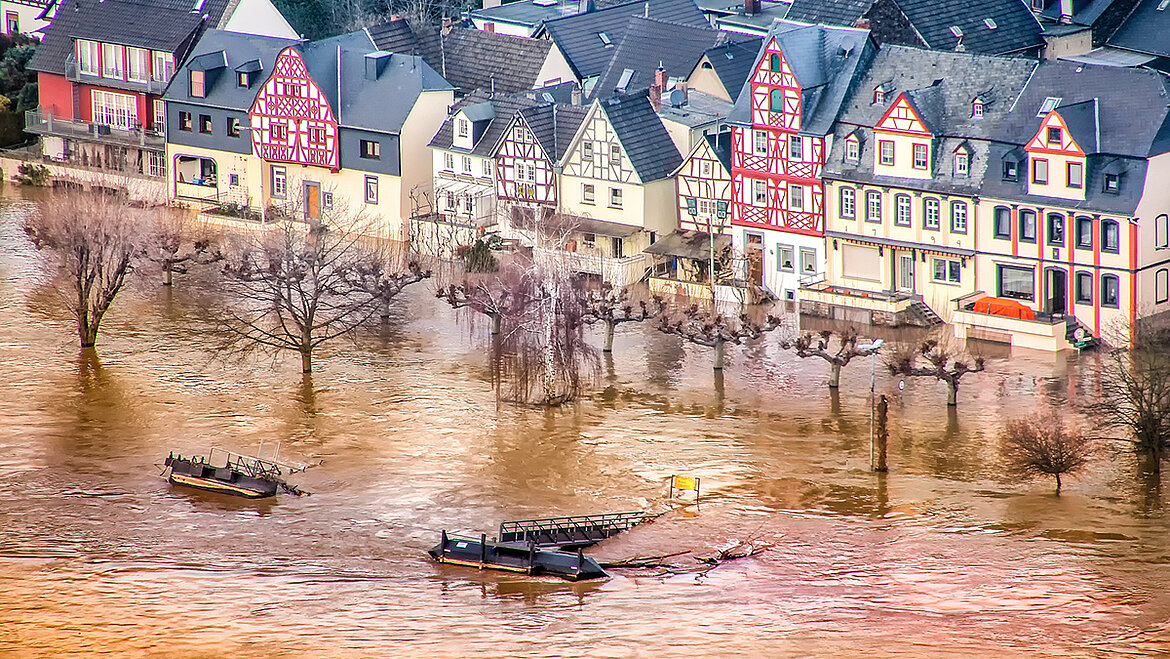
What exactly is the role of human beings? It is difficult to attribute the changes and increasing frequency of extreme weather events solely to humans. Since the 1990s, researchers have been blaming rising greenhouse gas emissions for the rise in average temperatures, which are of course mainly caused by humans - directly or indirectly. Above all, they influence the temperatures and cause them to rise. Climate change and extreme temperature-related events such as drought and heat are occurring.
The effects of climate change on the number of extreme rainfalls, on the other hand, are more difficult to prove. Nevertheless, it has long been known that the climate will change. However, in the past people did not believe in such extreme developments as we are experiencing now.
As a result, the sewage systems in villages and towns are usually not designed to cope with the large volumes of water that have to be handled during heavy rainfall. This in turn leads to significant flooding. In addition, rivers and other bodies of water can flood the banks due to the massive amounts of water. In the future, the probability of heavy rain and hail will continue to increase.
There is a possible explanation for this, but it is due to the rising temperatures: Higher temperatures and longer periods of heat cause water from plants, soil, lakes and other bodies of water to evaporate more quickly. This evaporated water rises and comes back to earth as precipitation. As a result, rainfall is becoming more frequent and heavier.
Will there be more storms in the future and is climate change to blame?
The number of hurricanes is also rising steadily. Whether this development is directly attributable to climate change cannot yet be proven due to a lack of data collection. However, global warming is reducing the global air circulation. As a result, storms also migrate more slowly. In addition, warm air absorbs moisture more easily and quickly. The Potsdam-based researcher Rahmstorf says there is seven per cent more water vapour per degree of global warming. This favours the further increase in extreme precipitation and storms.
What weather extremes are there in Germany?
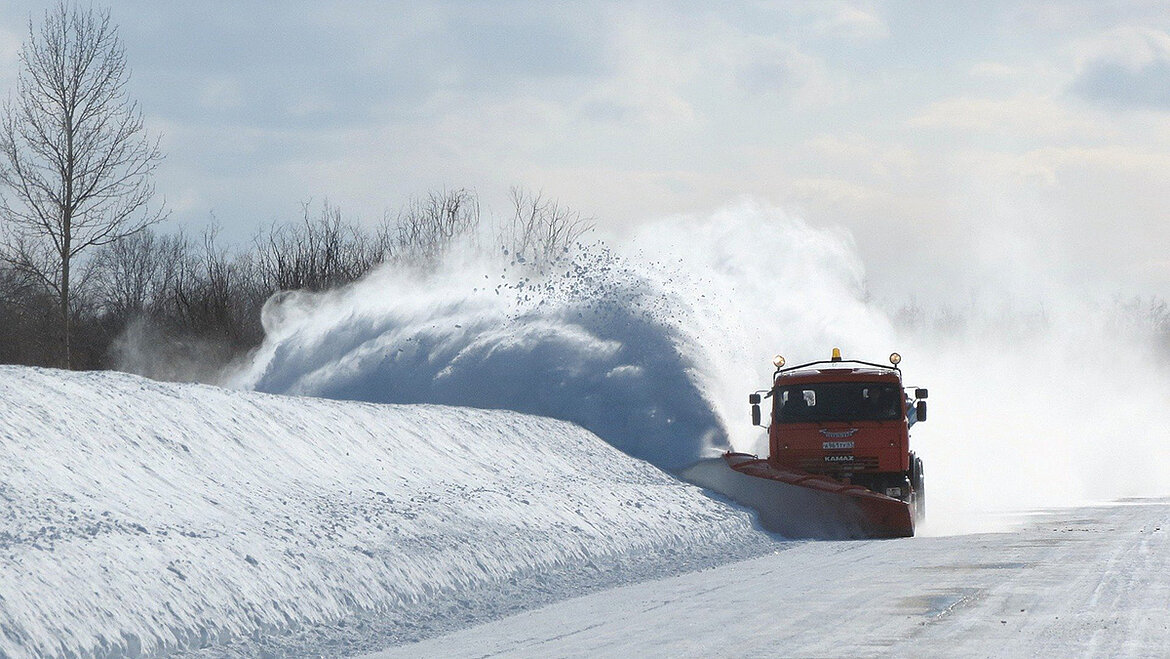
In spring 2020, Germany was hit by hurricane Sabine . The squalls reached maximum speeds of up to 219 km/h. The hurricane caused several deaths and countless injuries. Traffic was also heavily affected - flights were cancelled and roads were partially closed. The extreme weather event has resulted in nationwide losses of more than half a billion euros: Fallen trees, damaged cars, houses and industrial buildings. In many parts of Germany, billboards flew through the air and smashed windows and shop windows. Similar, fortunately often weaker hurricanes, gusts and storms are more frequent in Germany and throughout Central Europe.
In addition, all of Central Europe was plagued by heavy snow in January 2019. The particularly abundant and long-lasting snowfalls have caused catastrophic conditions locally. In order for the German Weather Service to announce snowfall, more than 15 centimetres must fall quickly within twelve hours. At the beginning of January, however, a total of 450 centimetres of fresh snow fell in the Alpine region. The large masses of snow caused damage of between 30 and 40 million euros. Under the heavy snow masses, roofs of private houses, but also of larger industrial and sports halls collapsed in many places. Trees also gave way to the weight and there were several train accidents, fortunately without any personal injury.
But extreme weather events not only have serious impacts on people and nature - industry is also affected.
How do extreme weather events affect industrial companies?
Both private households and industrial companies must adapt to the upcoming changes and, above all, prepare their buildings for such events. Storms, which are becoming increasingly strong, will mainly cover older roofs and also damage roof windows and skylights. In addition, flat-roof buildings are particularly threatened by the weight of snow masses, as they are in danger of collapsing. This usually concerns sports halls, event locations or industrial buildings. Let us take industrial buildings as an example to illustrate the effects of increasing extreme weather events.
On flat roofs, skylights such as rooflight domes, continuous rooflights and flat roof windows usually bring daylight into the building. However, they also ensure safety in the event of fire when they act as smoke and heat vents. It is therefore essential to ensure their intactness and functional integrity. So, how do manufacturers of skylights, such as LAMILUX, equip the skylights on industrial buildings to protect them against extreme weather events?
Snow load
The DIN-1055-5 standard certifies the snow load for skylights - i.e. what weight the glazing can bear. Accordingly, LAMILUX selects the glazing depending on the region in which it is used. The motors of the ventilation and SHEV flaps are also designed accordingly, so that they still open even when there is snow on the element.
Hail
LAMILUX also prepares its skylights for hail. LAMILUX F100 W dome lights and continuous rooflight B offer the option of special hail protection glazing to prevent possible damage and comply with hail protection class 5.
Heat
If high-angle and intense sunlight falls on the roof in summer, skylights are a gateway for high temperatures. Summer thermal insulation is the keyword here: Special glazing as well as internal or external shading minimise solar radiation and thus help to prevent or significantly reduce possible overheating.
Heavy rain and storms
To be prepared for heavy rain and storms, LAMILUX tests its skylights extensively for driving rain, air and water tightness. For this purpose, the company has developed a special test for dome lights and continuous rooflights that combine precipitation and wind: the Driven Rain Index (DRI).
LAMILUX also ensures that its skylights can be installed even under adverse conditions. This is achieved by a high degree of prefabrication. The dome lights and flat roof windows are delivered to the construction site completely pre-assembled. This greatly reduces the time during which fitters are exposed to precipitation or heat and reduces the susceptibility to errors when installing the elements - for example, for dirt or water that penetrates the structure during assembly on the roof. This process optimisation simplifies assembly in snow or heat. However, it is of course still not possible to perform an install on the roof during heavy storms - because safety always comes firs


